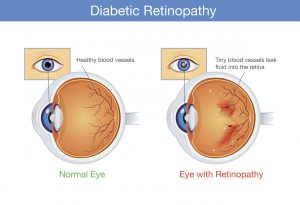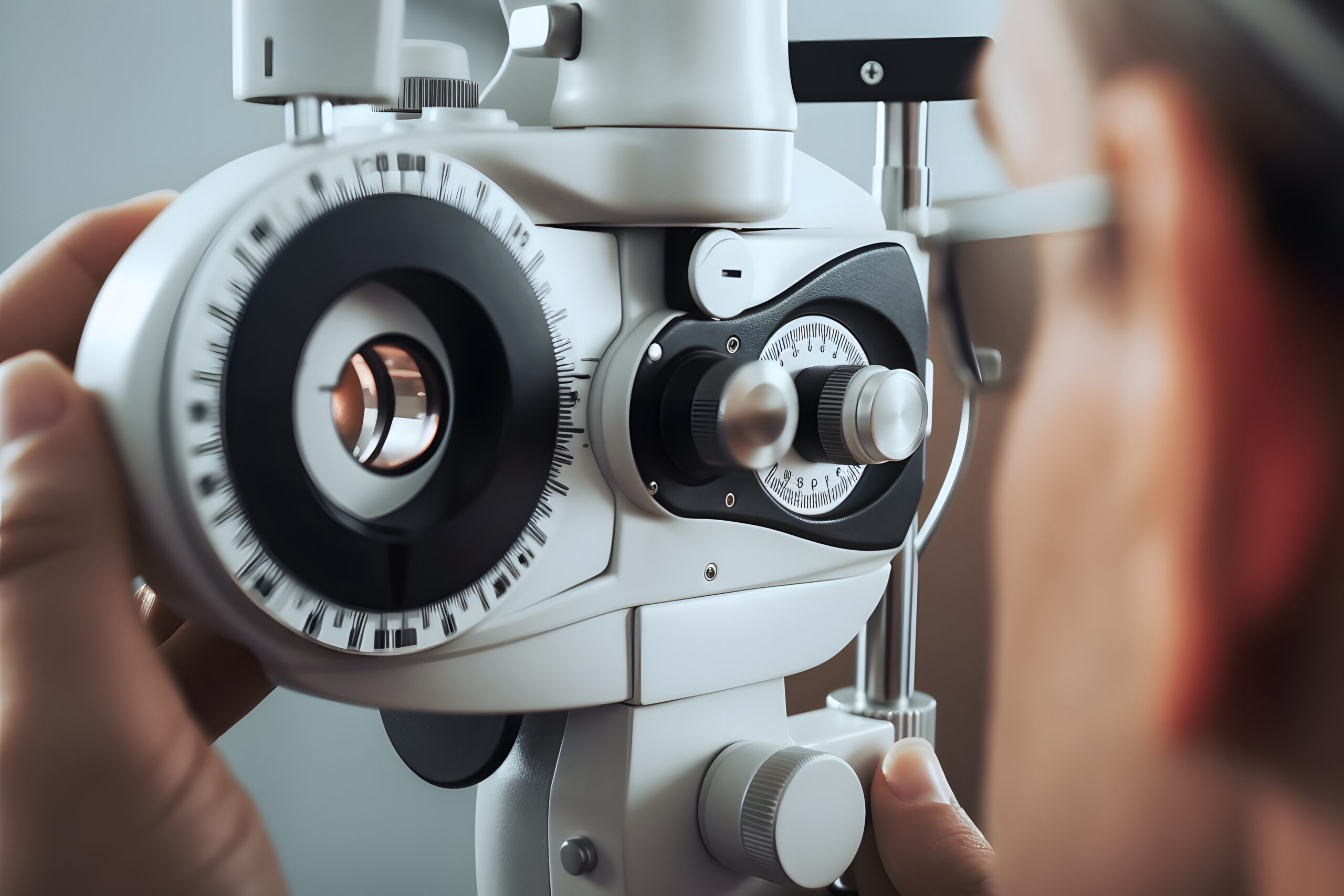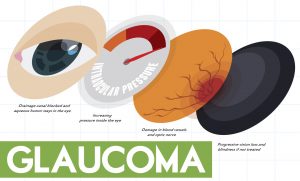Diabetes increases the risk for multiple health problems, from cardiovascular disease to kidney damage to skin conditions. Another common – and often preventable – problem linked to diabetes is vision loss. November is Diabetes Eye Disease Month, a time to spotlight the most common eye disorders associated with diabetes and focus on ways to decrease your risk.
According to the Centers for Disease Control and Prevention’s “National Diabetes Statistics Report 2020,” which analyzed health data through 2018, 34.2 million Americans – just over 1 in 10 – have diabetes. In addition, 88 million American adults – approximately 1 in 3 – have prediabetes. Further, 7.3 million adults over 18 were unaware or did not report having diabetes.
Over time, diabetes can damage your eyes and cause poor vision, even blindness. It can lead to
diabetic eye disease, a group of eye problems that includes diabetic retinopathy, diabetic macular edema, cataracts and glaucoma.


In the early stage of diabetic retinopathy, called nonproliferative diabetic retinopathy, damaged blood vessels can weaken, swell, or leak into the retina. In the more serious stage, called proliferative diabetic retinopathy, some blood vessels close off and new blood vessels grow on the surface of the retina. These blood vessels are abnormal and can cause serious vision problems.
Diabetic macular edema involves fluid build-up on the center part of the retina, called the macula, which is responsible for the detailed, straight-ahead vision necessary for reading, driving and seeing faces. The built-up fluid makes the macula swell, blurring vision and destroying this sharp vision. Diabetic macular edema, which can cause permanent vision loss, typically develops in people who already have other signs of diabetic retinopathy.


Glaucoma is a group of diseases that cause damage to your eye’s optic nerve, which can lead to permanent vision loss. Glaucoma occurs when pressure builds up in your eyes. This pressure pinches the blood vessels that carry blood to the retina and optic nerve, causing gradual vision loss. Having diabetes doubles your chances of getting glaucoma.
With open-angle glaucoma, the most common type, pressure builds up inside your eye when fluid can’t drain effectively through the normal drainage channel, called the trabecular meshwork. This type of glaucoma can be treated with medication and eye drops that lower eye pressure, speed up drainage, and reduce the amount of fluid your eyes make
People with diabetes are at risk for a condition called neovascular glaucoma, in which new blood vessels form on the eye’s iris. These blood vessels block the normal flow of fluid and raise eye pressure. Treatment for neovascular glaucoma may include use of a laser to reduce the number of blood vessels or anti-neovascular endothelial growth factor (anti-VEGF) injections to halt the growth of new blood vessels.
There are other eye conditions associated with diabetes including branch retinal vein occlusion (BRVO) and central retinal vein occlusion (CRVO). Arteries and veins are blood vessels that carry blood throughout the body. There is one main artery and one main vein supplying the retina.
When this vein becomes blocked, blood and fluid spills out into the retina and the macula can swell, which affects your sharp central vision. Over time, if blood circulation remains cut off, nerve cells in your eye can die and more vision can be lost.
When branches of the retinal vein become blocked, the resulting condition is called branch retinal vein occlusion (BRVO). When the main retinal vein becomes blocked, it is called a central retinal vein occlusion (CRVO).
Here’s the good news: You can help prevent all of these diabetes-related eye disorders by taking steps to manage your diabetes. To do that, you must control your blood glucose, blood pressure and cholesterol levels. Take good care of yourself through healthy eating, exercising regularly and taking medications as prescribed.
In addition, if you smoke, quit. There are many resources online and in the community to help you quit smoking. And don’t forget to get a complete, dilated eye exam once a year, so your eye care professional can detect early signs of diabetic eye disease. Be eye smart: Take steps to protect your vision.






Leave a Reply